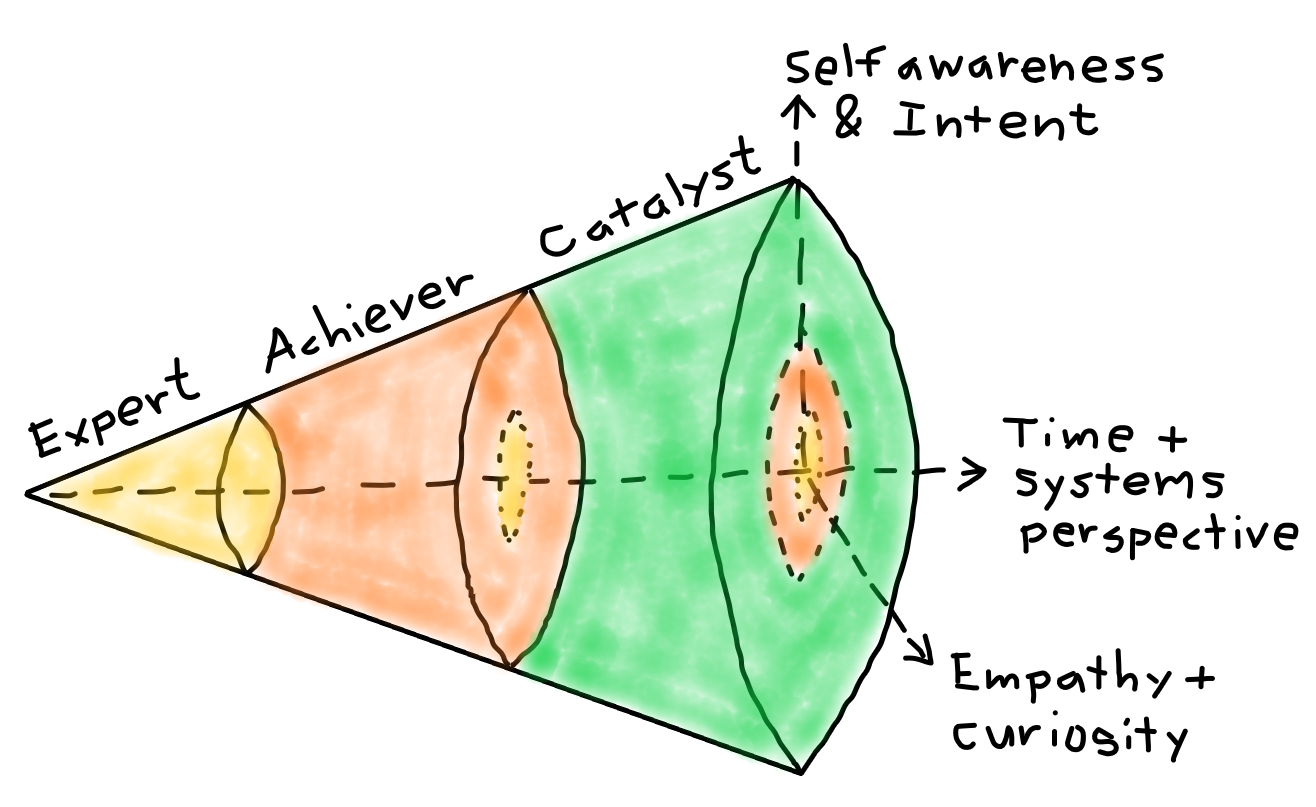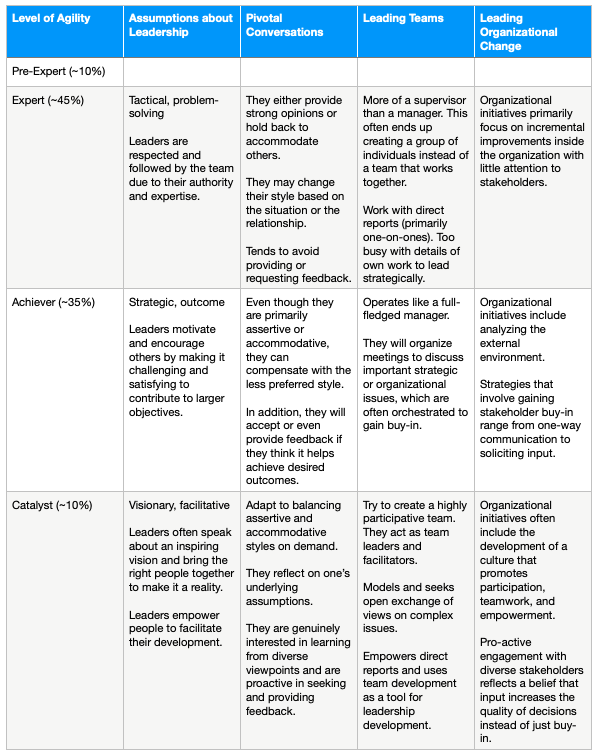
Leadership is a critical factor that contributes to the success of any team. It is likely even more important in an agile environment. Leadership agility is quite simply the ability to take sustained, effective action amid conditions of mounting complexity and rapid change.
This blog will cover leadership agility and its levels in an effort to help you explore ways you can educate managers on the culture of agility required to move to the next level.
What is leadership agility?
Bill Joiner and Stephen Josephs of ChangeWise, did a five-year investigation on this topic. Their research showed that, at its core, leadership agility is the ability to take “reflective action.” Where one step back from one’s current focus, gain a broader, deeper perspective, then refocus and take action that based on the information gained by this larger perspective. As leaders become more agile, their ability to step back and look at the big picture and the frequency with which they move through cycles of reflection and action increases.
Their study showed that successful leaders skilled in exercising four mutually reinforcing types of agility:
Context-setting agility: A leader’s willingness and ability to undertake visionary or strategic initiatives instead of tactical and incremental ones.
Stakeholder agility: A leader’s ability to understand the differences between their own views, priorities, and objectives from key stakeholders and align them appropriately.
Creative agility: How insightful and innovative a leader is when it comes to analyzing and resolving complex problems.
Self-leadership agility: How proactive a leader is when it comes to experimenting with effective behaviors and looking for feedback.
However, ChangeWise’s research shows that the leadership needs a more dynamic approach as the business environment becomes more challenging. The competency-based leadership models will not be successful in such environments.
With that in mind, they tried to find an answer for their research question: How do leaders at different developmental stages think and act when leading change, leading teams, and in pivotal conversations?. They found distinctively different leadership behaviors that correlate with each stage and the cognitive and emotional capacities that enable those behaviors. They decided to call the combination of leadership behavior and internal capabilities found at each stage a “level of leadership agility.”
Levels of agility in the leadership
Levels of agility in leadership are not based on personality types or thinking styles. Each of these levels of leadership agility grows from the skills and capacities developed at previous levels. There are three main levels of agility in leadership:
- Expert leadership
- Achiever leadership
- Catalyst leadership
These agility levels set the tone of the company’s leadership culture, as different levels of agility may predominate at different managerial tiers.

Expert leadership
Here, managers tend to operate within their boundaries with little emphasis on cross-functional teamwork. They make tactical and incremental decisions regarding organizational improvements. They tend to focus more on their subordinates’ work. Therefore, they have less time to strategically approach and grow in their role.
Achiever leadership
Here, managers often speak about strategic objectives and ensure they have the right people and processes to achieve them. It encourages and rewards customer-focused, cross-functional teamwork. This type of leader focuses less on subordinates’ work and tries to minimize micro-managing. Instead, they try to develop effective teams where achieving outcomes is the responsibility of the team members.
Catalyst leadership
Here, managers focus on achieving strategic outcomes by encouraging high participation, collaboration, creativity, and mutual trust. Senior teams are turned into role models, which will create the expected culture within the organization to promote and encourage it. Leaders not only coach their people, but they will also evaluate and provide informal feedback about their own leadership skills and effectiveness.
About 10% of managers we meet are at the pre-expert stage, 45% at expert, and 35% at achiever. Only about 10% have developed the cognitive and emotional capacity to lead at the catalyst level.
Conducting pivotal conversations
The table below explains how managers at each leadership level conduct themselves in pivotal conversations, when leading teams, and when leading organizational change.

As you can see from the above table, the Expert level is best suited for a relatively stable environment with low complexity. On the other hand, the Achiever is suitable for moderately complex environments with episodic change, while the Catalyst level is suitable for rapidly changing, highly complex environments.
Conclusion
Bill Joiner and Stephen Josephs’ research shows that managers who have developed catalyst-level leadership are more effective than those limited to the expert or achiever levels. Yet, expert-achiever leadership has been the norm for decades. Therefore companies face the challenge of improving their managers’ leadership agility. We hope this article provides a guideline on what to expect from each leadership level, and we have to improve to achieve the next.
We explore a bit more about organizational change and culture in our advanced workshops.